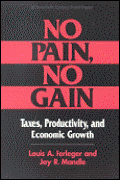Studies in this week’s Hutchins Roundup find that encouraging workers to move among regions would boost UK productivity, interactions between real estate agents and potential homeowners are a source of housing discrimination, and more.
Want to receive the Hutchins Roundup as an email? Sign up here to get it in your inbox every Thursday.
Encouraging workers to move between regions would boost UK productivity
Barriers that prevent workers from moving between occupations and regions can reduce productivity by keeping unemployed workers from jobs for which they may be qualified. Using data on more than 15 million U.K. job vacancies posted online from 2008 to 2016, Arthur Turrell of the Bank of England and co-authors investigate the impact of labor market mismatch on productivity in the U.K. They find that occupational mismatch only had a minor impact after the financial crisis, and the effect of occupational mismatch on productivity disappeared completely after 2012. Regional barriers, on the other hand, had a much stronger effect. The authors show that eliminating regional mismatch between 2008 and 2015 would have boosted the UK’s unusually slow productivity growth back to its pre-crisis trend.
Interactions between real estate agents and potential homeowners are a source of housing discrimination
Peter Christensen of the University of Illinois, and Christopher Timmins of Duke University argue that even though discrimination in housing is illegal, real estate agents still steer minorities to neighborhoods with less economic opportunity and higher rates of crime and pollution. Compiling data from the Housing Discrimination Study and data on neighborhoods in 28 U.S. cities, the authors examine houses shown to auditors of different races posing as potential homebuyers. Holding income and location constant, the authors find agents recommend lower-quality neighborhoods to minorities. Conditional upon the characteristics of the house suggested by the audit tester, minorities are significantly more likely to be steered towards neighborhoods with less economic opportunity and greater exposures to crime and local pollutants, the authors say. The steering effect is also large enough to fully explain the differential in proximity to Superfund sites among African-American mothers, they add. In addition, since neighborhood attributes determine important short- and long-run outcomes–such as schooling, safety, and employment–real estate agents’ discriminatory practices may contribute to the growing inequality between minorities and whites, the authors argue.
Hiring skilled immigrants boosts firms’ productivity
The H-1B visa program allows employers to temporarily hire high-skilled workers from abroad with college degrees or other skills. Gaurav Khanna and Munseob Lee of the University of California, San Diego, study the impact of hiring high-skilled immigrants on firm productivity in the U.S. by combining data on employer applications for H-1B visas with information on individual firms and their products from retail scanner data. Previous research suggests that product reallocation–or the entry of new products and exit of outdated products–is highly correlated with firm growth and productivity. The authors find that consumer-product firms with a larger share of employees on H-1B visas have a higher rate of product reallocation, holding research and development expenditure, size, revenue, and other firm characteristics constant. A 1 percentage point increase in a firms’ share of H-1B employees is associated with a 5 percentage point increase in the product reallocation rate, the authors estimate.
Chart of the week: The US yield curve, which compares the yield on US treasuries of different maturities, is flatter now than a year ago

Quote of the week:
“[I]f you talk to most business leaders, they will tell you that they are investing a ton in technology in their businesses to make every worker more efficient and to get every minute in the workplace more effective…. You look at their productivity numbers, they aren’t going anywhere, right? So, what’s going on? … There are a number of possibilities. One is that, you know, the business is just wrong. They’re not investing that smart, you know, this stuff is not really making anybody more productive. I don’t believe that, so I don’t think that’s really right. A second is that it takes a while for, when technology has been introduced, for the economy to really understand how to use it most effectively. … There is some truth to that. I mean, you think about the desktop computer. Right? It took a long time for the desktop computer to show up in our productivity numbers,” says Raphael Bostic, president of the Federal Reserve Bank of Atlanta.
“A third argument is that we’re just mismeasuring productivity today, the world is different. …[Y]our phone … now you can take pictures and do all this sort of stuff that you couldn’t do before, … that doesn’t show up as productivity…. A fourth thing – and this is one I’ve been pushing on – is that, while we’ve seen all these benefits in the productivity space, we also have a lot of new costs. Right? … [W]e have a lot more regulatory compliance coming out of the crisis. There is a lot of stuff that we now want to pay attention to that we didn’t want to pay attention to before. Businesses are spending a ton on cybersecurity, … and that was a line item that was zero 12 years ago. Right? And so productivity is how much you produce at a given cost. So, if we’ve got new costs, right, that’s going to eat away at productivity as well.”










Commentary
Hutchins Roundup: Worker mobility in the UK, housing discrimination, and more
July 19, 2018